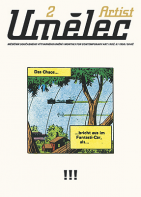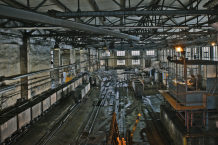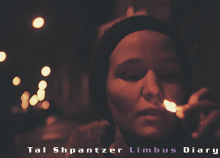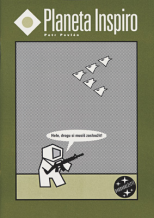| Umělec magazine 1998/2 >> Delta Or New Theory of Geographical Reality | List of all editions. | ||||||||||||
|
|||||||||||||
Delta Or New Theory of Geographical RealityUmělec magazine 1998/201.02.1998 Vít Havránek | exhibition | en cs |
|||||||||||||
|
"Delta is the title of an exhibition put together by international curator Francesco Bonami, the editor-in-chief of FlashArt International. It was located on the first floor of Musee des Arts moderne de la ville de Paris, the place which has lately shown quite interesting sounds into the “chaotic situation“ of contemporary art. When I was thinking of the Delta, having only read the short introductory text and having skipped through the exhibition, what I found more interesting was its concept of which I didn’t know much. The exhibition itself feels a bit accidental, which does not imply unhomogenous. It was perhaps because of the fact that only three or four projects out of twelve were interesting. The rest is quite widespread and not very fresh like a new product of a well-know brand producing chocolate. In fact, the works do have features of industrial products as their appearance is set by euroamerican art system - an industry of high standard and efficiency in which features are often imprinted onto a product by a system more than an individual.
I have thus decided to just slightly lift the curtain covering this at first chaotic collection imported from four parts of the globe and I will search for thoughts which are hidden underneath. According to the curator who has shown efforts to define his own curatorial prospects in the past, the exhibition attempts to bring a “new vision for geography in the presentation of contemporary art“. It is polemic with a successfully accepted and fashionable notion of our euroamerican world as a global village where art develops and grows up on media information, where the same codes and information are shared and the information superhighway is one of culture’s first prerequisites. This is, however, Bonami’s world. For some reason, you want to run away from it at least for a little while and find a new perspective with this “nostalgic and frightening wish for unity“. “The real challenge lies in pointing out the complexity of an individual vision allowing a new, unlinear assessment of possible relationships within some fictitious group. If this challenge turns out to be successful, the result must bring a clearer vision of geographical structure of a contemporary exhibition where specific identities occupying precise places contradict by their mutual relationships the theory of homogenity inherent in each global and international presentation“. This is not just a return to the local, shifting the spotlight to specific features of local traditions or different historic experiences. The curator writes: “Contemporary artists become more and more afraid of his or her own geographical identity; cultural identification only obscures more sophisticated ways to transfer folklore to an area which is semiotically out-of-date.“ The exhibition’s title is to do justice to the part of the process in which a river or its originally single stream divides into a number of independent arms giving the observer a chance to see things differently, in a more structured or differentiated manner based on the natural laws’ manifestation. This process occurs only for a limited amount of time which is, according to Bonami, his exhibition. Part of the Delta is also its estuary when “a set of individuals form one coherent and strong group“ with the adjective “global“ or “international“. Bonami’s first concern was the “complexity“ of each of the works and an emphasis on rising conflicts, unreducibility of approaches, artistic languages and a sort of appeal to possibilities offered by one work. Definition of each work’s complexity is particularly startling: “Defending the choice of an artist in no way consists of saying that it is a good or a bad art work; the point is to fix the presence of an individual project into the influence it has and into possible multiplications in regard to a common viewer. My question is: Can this project confront the viewer in such an independent manner as the viewer is confronted by himself? As opposed to: Does this artist apprehend a semantic issue in a deeper way within an isolated critical discourse?“ My own question is: can somebody be “intelligent“ enough to construct such a complex question and at the same time be so naive as not to find an answer right away? I tried to understand what is new that this look at the delta is supposed to bring because it cost me a lot of time and energy. Diving deeper for the core of Bonami’s theory, one finds out that there just isn’t one. It is a conglomerate of allusions and idioms taken from fashionable social and philosophical essays, presented with creativity of an intellectual masturbator. Although the curator wishes to go against mainstream and international art, walking through the exhibition reminds me of flipping through an international art magazine, TV zapping or net surfing. In contrast to Bonami’s claims, a lot of contemporary globalization features pop up. It is satisfaction streaming from fragmentation of certain experience. The heterogenous character of this exhibition counts on feelings we are exposed to when watching, say, a new wave of post-Lynchesque films, music videos or TV news reports. With this quick, consecutive change of environments, contexts, media, etc., we gain the most gratifying information about a problem - we have a chance to see it in the greatest detail and from wide global perspective but most importantly - we are not exposed to boredom. Bonami declares his effort to find an alternative to the “international“ perspective of art yet we must say that he is not able to comprehend his own position, let alone his ability to step into general discourse in a qualified manner or to enrich this discourse in some way. What remains then are some of the projects exhibited. A cartoon by William Kentridge is amusing, DYI-like imperfect film. The black-and-white drawings tell of the horrors of war and human violence. The form of a cartoon has become contemporary conscience of art. The entire specter of cartoons, ranging from Japanese sci-fi cartoons to sophisticated drawings by Raymond Pettibone, is able to deal with serious issues without pathos and moralizing, including humanity, morality and ecology (The Simpsons). The most interesting surprise of this exhibition was represented by two cycles of drawings by the femme d’interieur Marie Claire Mitoud made during two years of her studies, 1990-91 and 1991-92. These naive and simple drawings made with pupils’ care are internally refined diary notes depicting the most beautiful moment of each day. She has been picking just one experience, one moment out of a long day that would be recorded day by day, week by week for the period of two years. Reality mixed with emotions, a concept intertwoven with life, pictures document Proust and Borges who occupy the mind and fantasy of this housewife. Some days are cold and impersonal, reminiscent of color photographs, while others abound in emotions over the most banal daily moments. With his sounds, Bonami even reached our East European zone, luckily picking Jasanský and Polák who come out as some of the best artists at the Delta. They show intimately inhabited land with its wiener-dogs, a truck with a tilt and a moving telegraph pole. Their installation, however, feels insensitive as their quite small photographs are mechanically piled into rows as if they were bars of soap in storage, not a perspective lead by pure love and irony. "
01.02.1998
Recommended articles
|
|||||||||||||
|
04.02.2020 10:17
Letošní 50. ročník Art Basel přilákal celkem 93 000 návštěvníků a sběratelů z 80 zemí světa. 290 prémiových galerií představilo umělecká díla od počátku 20. století až po současnost. Hlavní sektor přehlídky, tradičně v prvním patře výstavního prostoru, představil 232 předních galerií z celého světa nabízející umění nejvyšší kvality. Veletrh ukázal vzestupný trend prodeje prostřednictvím galerií jak soukromým sbírkám, tak i institucím. Kromě hlavního veletrhu stály za návštěvu i ty přidružené: Volta, Liste a Photo Basel, k tomu doprovodné programy a výstavy v místních institucích, které kvalitou daleko přesahují hranice města tj. Kunsthalle Basel, Kunstmuseum, Tinguely muzeum nebo Fondation Beyeler.
|






























 We Are Rising National Gallery For You! Go to Kyjov by Krásná Lípa no.37.
We Are Rising National Gallery For You! Go to Kyjov by Krásná Lípa no.37.
Comments
There are currently no comments.Add new comment